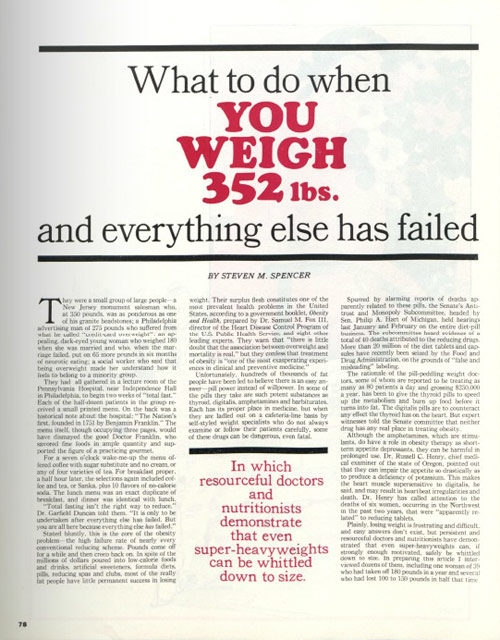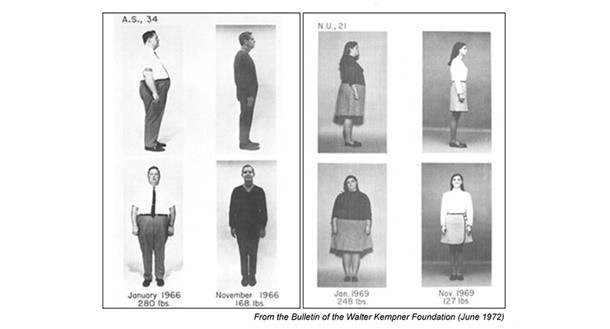Stated bluntly, this is the core of the obesity problem—the high failure rate of nearly every conventional reducing scheme. Pounds come off for a while and then creep back on. In spite of the millions of dollars poured into low-calorie foods and drinks, artificial sweeteners, formula diets, pills, reducing spas and clubs, most of the really fat people have little permanent success in losing weight.
Those words were written 50 years ago this week in a Saturday Evening Post article by Steven M. Spencer that looked at last-ditch efforts by obese people to lose weight, but it could have just as easily been written today. Despite half a century of studies, novel diets, advances in surgery, and potentially lucrative drug options, more people are obese today than in 1968. Back then, the estimate was one in five adults were obese. Today it’s one in three.
Some things have changed. In the late ’60s, people were just realizing that using digitalis, amphetamines and thyroid pills to lose weight had terrible consequences. The Senate had just concluded hearings on the largely unregulated diet pill business, and restrictions were imminent.
Some of the up-and-coming methods weren’t much better. One doctor promoted a two-week starvation diet that consisted mostly of Sanka and diet soda.
Others, while not necessarily extreme, have since fallen out of favor. Dr. Kempner’s famed rice diet was “low-fat, low-protein and almost unbearably salt-free” — the opposite of the high-protein, low-carb paleo diets currently in vogue.
Another new option for rapid weight loss in 1968 was surgery. The operation, which involved bypassing most of the small intestine, had only been performed in a few, extreme cases. Doctors eventually realized that this particular surgery had many unpleasant consequences, including diarrhea, night blindness, osteoporosis, malnutrition, and kidney stones. More effective surgeries soon took its place.
Despite the apparent simplicity of the weight loss solution (calories in must be lower than calories out), doctors and researchers of the 1960s were realizing that humans are mysteriously, frustratingly complex. Spencer wrote, “Why does the obese person find it so hard to reduce? The reasons, of course, must be sought in the baffling perversities of human motivation, in the tangle of social, psychological, genetic and biochemical strands that drew him into the fat life in the first place.”
Fifty years later, many still try to untangle their motivations in the same places: gyms, structured meal plans, and doctors’ offices. Of course many aspects have moved online, from support groups to exercise videos to illegal diet pills. And some people now reject society’s obsession with the slender altogether and embrace fat acceptance.
But the fact remains that most people want to weigh less than they do now. A socialite once quipped, “You can never be too rich or too thin.” The person who invents the key to successful long-term weight loss will likely be both.

Become a Saturday Evening Post member and enjoy unlimited access. Subscribe now



